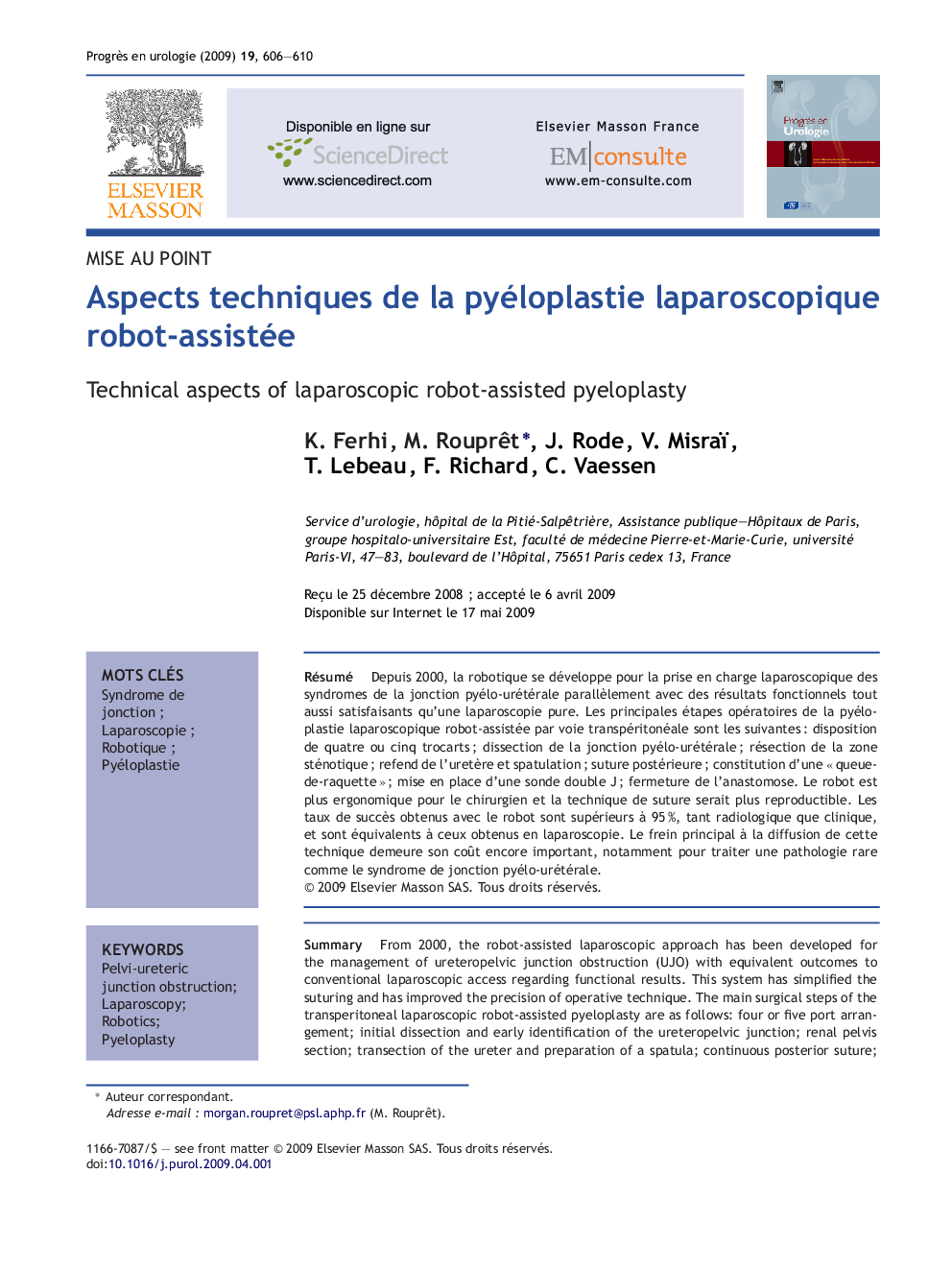| Article ID | Journal | Published Year | Pages | File Type |
|---|---|---|---|---|
| 3825828 | Progrès en Urologie | 2009 | 5 Pages |
Abstract
From 2000, the robot-assisted laparoscopic approach has been developed for the management of ureteropelvic junction obstruction (UJO) with equivalent outcomes to conventional laparoscopic access regarding functional results. This system has simplified the suturing and has improved the precision of operative technique. The main surgical steps of the transperitoneal laparoscopic robot-assisted pyeloplasty are as follows: four or five port arrangement; initial dissection and early identification of the ureteropelvic junction; renal pelvis section; transection of the ureter and preparation of a spatula; continuous posterior suture; confection of a handle racket suture; placement of a double J stent; ending of the anastomosis. Outcomes after robotic and pure laparoscopic pyeloplasties are equivalent nowadays. Despite the financial cost, it seems easier and technically feasible and accessible for surgeons accustomed to the laparoscopic techniques and even beginners to learn the robotic technique if the system is available in their institution with success rate (radiologic and clinical) almost similar with those obtain with open techniques.
Keywords
Related Topics
Health Sciences
Medicine and Dentistry
Medicine and Dentistry (General)
Authors
K. Ferhi, M. Rouprêt, J. Rode, V. Misraï, T. Lebeau, F. Richard, C. Vaessen,
